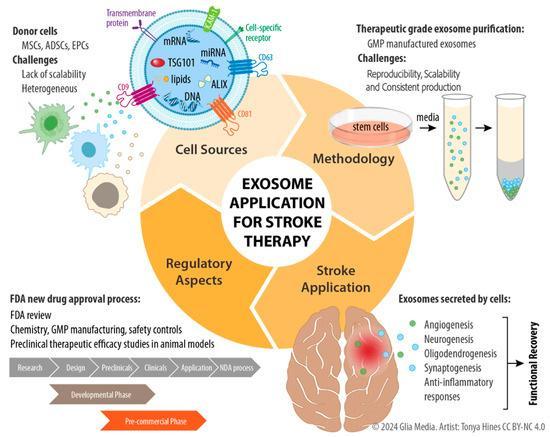
Emerging Roles of Exosomes in Stroke Therapy
Stroke is the number one cause of morbidity in the United States and number two cause of death worldwide. There is a critical unmet medical need for more effective treatments of ischemic stroke, and this need is increasing with the shift in demographics to an older population. Recently, several studies have reported the therapeutic potential of stem cell-derived exosomes as new candidates for cell-free treatment in stoke. This review focuses on the use of stem cell-derived exosomes as a potential treatment tool for stroke patients. Therapy using exosomes can have a clear clinical advantage over stem cell transplantation in terms of safety, cost, and convenience, as well as reducing bench-to-bed latency due to fewer regulatory milestones. In this review article, we focus on (1) the therapeutic potential of exosomes in stroke treatment, (2) the optimization process of upstream and downstream production, and (3) preclinical application in a stroke animal model. Finally, we discuss the limitations and challenges faced by exosome therapy in future clinical applications.
















